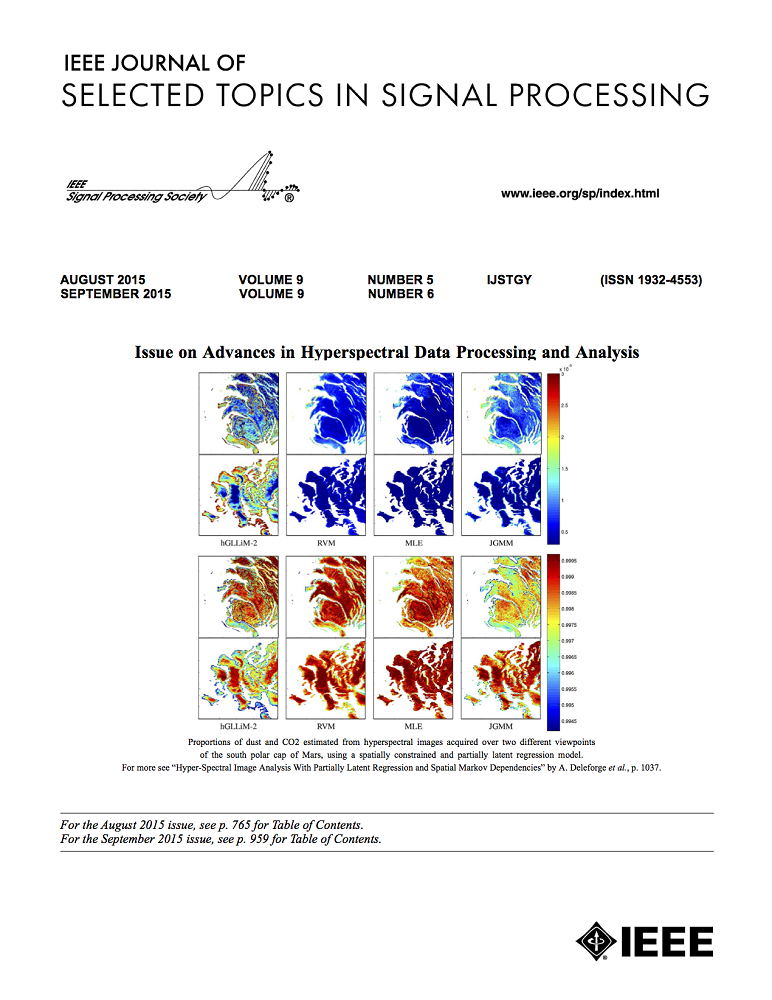Index-Modulated Metasurface Transceiver Design Using Reconfigurable Intelligent Surfaces for 6G Wireless Networks
IF 8.7
1区 工程技术
Q1 ENGINEERING, ELECTRICAL & ELECTRONIC
IEEE Journal of Selected Topics in Signal Processing
Pub Date : 2023-10-06
DOI:10.1109/JSTSP.2023.3322655
引用次数: 0
Abstract
Higher spectral and energy efficiencies are the envisioned defining characteristics of high data-rate sixth-generation (6G) wireless networks. One of the enabling technologies to meet these requirements is index modulation (IM), which transmits information through permutations of indices of spatial, frequency, or temporal media. In this paper, we propose novel electromagnetics-compliant designs of reconfigurable intelligent surface (RIS) apertures for realizing IM in 6G transceivers. We consider RIS modeling and implementation of spatial and subcarrier IMs, including beam steering, spatial multiplexing, and phase modulation capabilities. Numerical experiments for our proposed implementations show that the bit error rates obtained via RIS-aided IM outperform traditional implementations. We further establish the programmability of these transceivers to vary the reflection phase and generate frequency harmonics for IM through full-wave electromagnetic analyses of a specific reflect-array metasurface implementation.利用可重构智能表面为 6G 无线网络设计索引调制元表面收发器
更高的频谱效率和能效是第六代(6G)高数据速率无线网络的决定性特征。索引调制(IM)是满足这些要求的使能技术之一,它通过空间、频率或时间介质索引的排列来传输信息。在本文中,我们提出了符合电磁学原理的可重构智能表面(RIS)孔径新设计,以在 6G 收发器中实现 IM。我们考虑了空间和子载波 IM 的 RIS 建模和实现,包括波束转向、空间复用和相位调制功能。对我们提出的实现方法进行的数值实验表明,通过 RIS 辅助 IM 获得的误码率优于传统实现方法。通过对特定反射阵列元表面实施方案的全波电磁分析,我们进一步确定了这些收发器的可编程性,以改变反射相位并为 IM 生成频率谐波。
本文章由计算机程序翻译,如有差异,请以英文原文为准。
求助全文
约1分钟内获得全文
求助全文
来源期刊

IEEE Journal of Selected Topics in Signal Processing
工程技术-工程:电子与电气
CiteScore
19.00
自引率
1.30%
发文量
135
审稿时长
3 months
期刊介绍:
The IEEE Journal of Selected Topics in Signal Processing (JSTSP) focuses on the Field of Interest of the IEEE Signal Processing Society, which encompasses the theory and application of various signal processing techniques. These techniques include filtering, coding, transmitting, estimating, detecting, analyzing, recognizing, synthesizing, recording, and reproducing signals using digital or analog devices. The term "signal" covers a wide range of data types, including audio, video, speech, image, communication, geophysical, sonar, radar, medical, musical, and others.
The journal format allows for in-depth exploration of signal processing topics, enabling the Society to cover both established and emerging areas. This includes interdisciplinary fields such as biomedical engineering and language processing, as well as areas not traditionally associated with engineering.
 求助内容:
求助内容: 应助结果提醒方式:
应助结果提醒方式:


